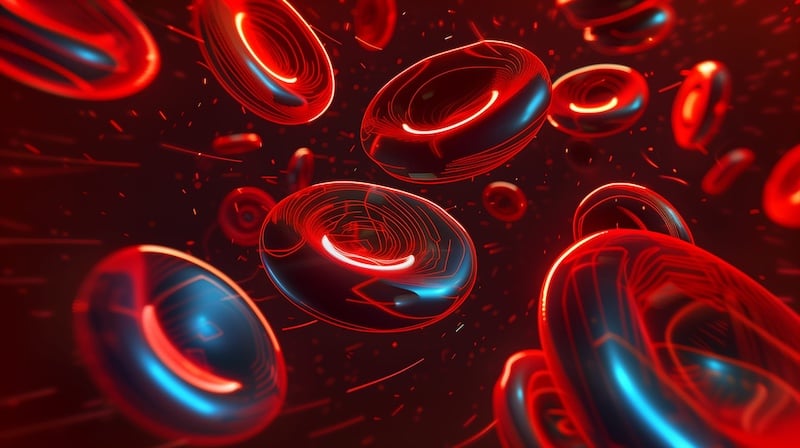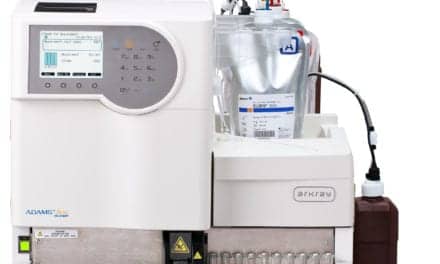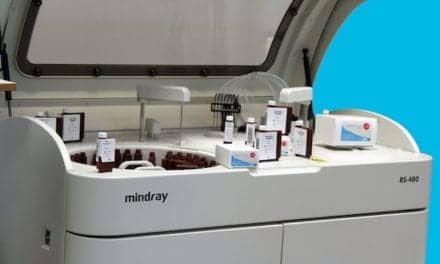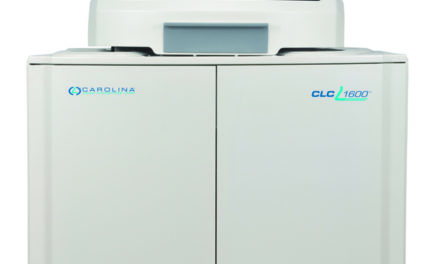By Alan Wu, PhD, DABCC
Summary: While the emergency department (ED) and intensive care unit (ICU) have a high rate of sample hemolysis, the neonatal ICU (NICU) is especially vulnerable to this preanalytical error.
Takeaways:
- Limited sample volume for neonates: Neonates have 80–100 mL of blood/kg of body weight. A premature neonate can weigh <1.5 kg and have a total blood volume of <120 mL.
- Electrolyte testing of serum and plasma: Hemolysis produces artificially high potassium concentrations that can be detected spectrophotometrically by chemistry analyzers when serum or plasma samples are tested.
- Electrolyte testing on whole blood: While testing whole blood samples for electrolytes requires less blood and can preserve usage of precious neonatal blood volume, hemolysis is common, and inaccurate potassium measurements can occur. An indicator for sample hemolysis has not been available until recently.
Sample hemolysis is a major source of preanalytical error. Common causes of hemolysis include tourniquet over-tightening and the use of small-bore needles during collection. Once collected, excessive mixing and improper transport to the laboratory are also contributory factors.
Collecting blood from neonates is particularly prone to producing in vitro hemolysis from sample collection, due to the presence of extremely small veins and heel sticks, sometimes requiring massaging of the heel to obtain the adequate amount of blood for testing. Moreover, neonates have more fragile red cells than adults.
The Role of Hemolysis Interference
Potassium is the major intracellular cation in human cells. The concentrations of circulating potassium are kept at a tight range of 3.5–5.0 mmol/L for adults and 4.0–6.0 mmol/L for neonates. Both decreases and increases in serum potassium are associated with muscle weakness and cardiac arrhythmias. Due to the high concentration of potassium in red blood cells, any breakdown will contribute significant amounts of this electrolyte to the sample.
Blood samples are centrifuged to produce serum and plasma, and are typically tested for potassium and other electrolytes on clinical chemistry analyzers. These instruments can also detect the presence of sample hemolysis and other interferents, such as lipids and bilirubin, by taking absorbance readings at the appropriate wavelengths. Until recently, it was not possible to detect hemolysis in a whole blood sample, as the deep color of whole blood obscures the presence of any free hemoglobin.
It has been estimated that sample hemolysis elevates potassium by 0.4–0.5 mmol/l for every 0.10 g/dL of free hemoglobin. When sample hemolysis is detected, either by the chemistry analyzer or a whole-blood blood gas system capable of such readings, a falsely high reading will occur. Depending on the true potassium result, this may elevate the value from low to normal or from normal to increased. In both situations, this may prompt an alert by the lab to the medical team for sample recollection.
Due to the low blood volume of an infant, recollection is often unjustifiable, particularly for a premature infant. In that case, the neonatologist will have to make important medical decisions without accurate measurements.
Detecting Hemolysis at the Point-of-Care
In 2024, the US FDA cleared the GEM Premier 7000 with iQM3, the first blood gas system that can detect the presence of hemolysis in whole blood samples at the point of care. Using acoustic forces, the system moves cells and particles away from aqueous fluids on 2 μl of blood to produce whole blood separation, without centrifugation.
After separation, a photometric detection of hemoglobin is detected at 570 and 610 nm, with results in 42 seconds. This enables attending physicians to assess the accuracy of potassium measurements, especially important in neonates.
Featured Image: Prostockstudio | Dreamstime.com
ABOUT THE AUTHOR

Alan H.B. Wu, PhD, is chief of Clinical Chemistry and Toxicology at San Francisco General Hospital Professor of Lab Medicine, University of California, San Francisco. He received BS degrees in chemistry and biology at Purdue University and a PhD degree in analytical chemistry at the University of Illinois. He completed a postdoctoral fellowship in clinical chemistry at Hartford Hospital. He is certified by the American Board of Clinical Chemistry in Clinical Chemistry and Toxicological Chemistry. His research interests include clinical toxicology, cardiac biomarkers, and point-of-care testing. Wu has over 500 publications in peer-reviewed journals. He has also written eight paperback books consisting of short stories designed to promote the value of the clinical laboratory to the general public. Recently he has launched a social media campaign to further expose lab medicine to students.




